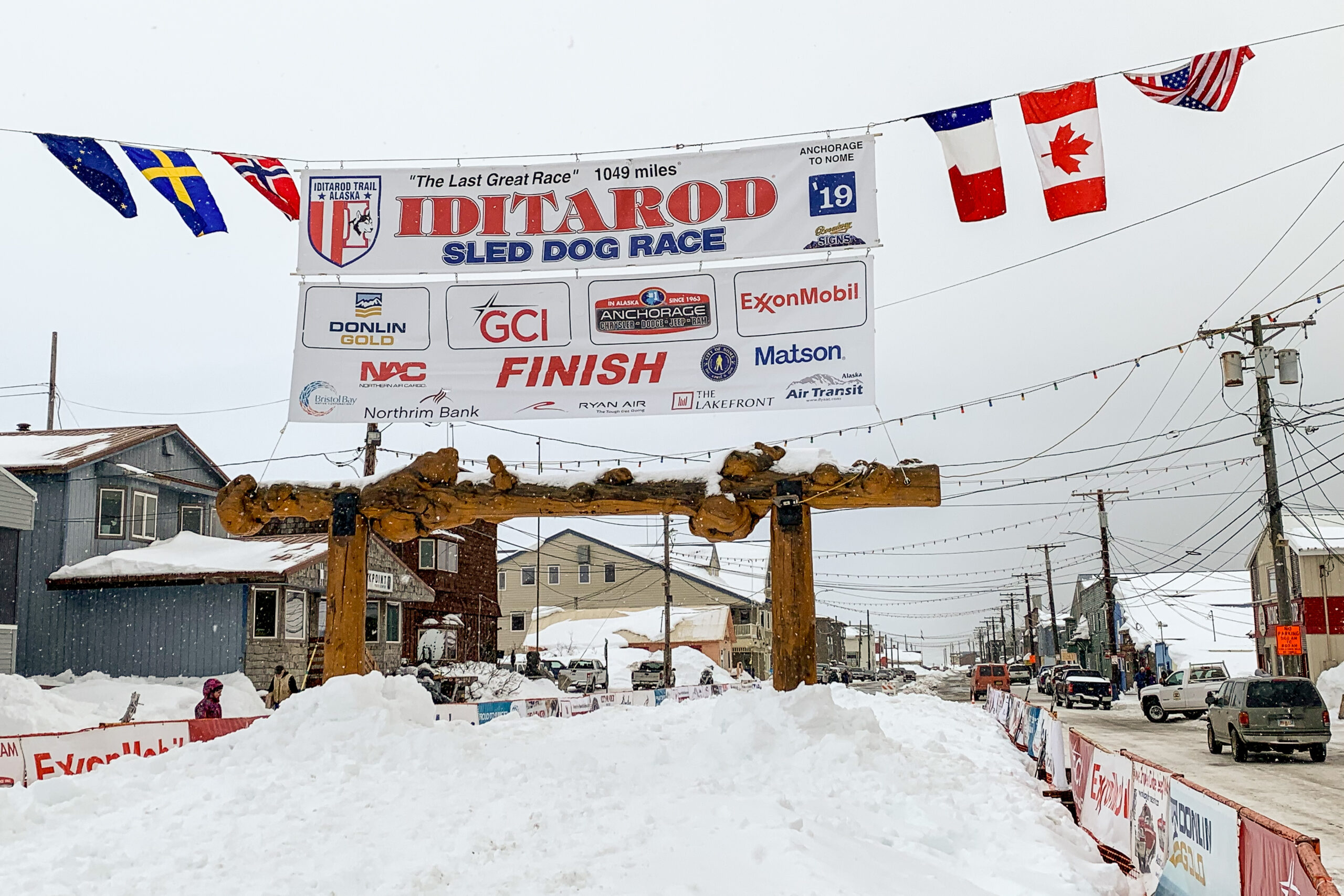Around 2 to 4am Wednesday morning: that’s when KNOM expects a championship finish in Iditarod 2019. Bethel musher Pete Kaiser holds a slim but potentially decisive lead: he’s about 6 miles ahead of Joar Leifseth Ulsom, with only about 50 miles to the finish line (as of 8pm Tuesday, per the Iditarod GPS tracker).
But there are still enough hours left before the Burled Arch for Ulsom to narrow, or possibly even erase, Kaiser’s lead.
How did we get here? Here are a few highlights of KNOM’s Iditarod coverage in recent days and our rationale for the finish time prediction.
A Leaderboard Shakeup
The second weekend of Iditarod 2019 brought dramatic shifts.
After leading the race through Unalakleet, Nicolas Petit’s team stalled on the trail near Shaktoolik. In an odd echo of his team’s wrong turn in 2018 (which likely caused him the championship that year), Petit’s long break on the trail upset the top of the 2019 leaderboard.
Pete Kaiser was the first musher in and out of Elim, followed closely by Joar Leifseth Ulsom. Late Monday night, Petit officially scratched in Shaktoolik, a rapid transformation for a musher who, only 24 hours prior, was in the “driver’s seat” of the race.
Citing the mental well-being of his ten dog team, Nic Petit has scratched in Shaktoolik. He led the pack for most of the race, but was halted in almost the exact same place as the detour last year that cost him first place. pic.twitter.com/jtwuJyjPZj
— Zachariah Hughes (@ZachHughesNews) March 12, 2019
On Tuesday morning, Kaiser and then Ulsom arrived into White Mountain, 41 minutes apart. While both mushers had 8 dogs on the string, Ulsom showed signs of slowing down; for the most part, the Norwegian musher has posted slower split times between the checkpoints on the Norton Sound coast, leading to White Mountain (between Unalakleet, Shaktoolik, Koyuk, and Elim).
Nevertheless, as Ben Matheson reported from White Mountain today, Kaiser isn’t taking for granted his present advantage over Ulsom. Kaiser’s most recent runs have been faster, but that hasn’t always been the case: “we’ve kind of been flip-flopping,” Kaiser said. “There are some runs my team is faster than his, and some runs his is faster than mine.” (Read more in “77 Miles — and, Perhaps, Joar Leifseth Ulsom — Stand Between Pete Kaiser and Iditarod Victory.”)
After the mandatory, 8-hour layover Iditarod requires of all competitors in White Mountain, Kaiser hit the trail again at 4:05pm to embark on the final, 77-mile trail to Nome. Ulsom left at 4:47pm.
When to Nome?
KNOM typically figures a run time of 10 hours from White Mountain to Nome: about 7 hours to Safety checkpoint (55 miles), and then 3 hours for the additional 22 miles to the Nome finish line.
Three factors may complicate these estimates: weather and trail conditions (the combination of which have generally led to slower-than-usual run times in the 2019 Iditarod), and the chase between Pete Kaiser and Joar Ulsom (which could encourage both teams to go faster).
All things being equal, 2 to 4am Wednesday is a good bet for seeing the Iditarod champion under Nome’s Burled Arch. The finish could be delayed, however, by the notoriously unpredictable weather of the trail near Safety, such as the stretch known as the “blowhole,” where wind gusts and ground storms can halt mushers cold.
Weather Forecast
University of Alaska–Fairbanks climatologist Rick Thoman says generally mild, if warm, weather should continue for the Norton Sound coast stretches of the Iditarod trail Tuesday into Wednesday: temperatures in the 20s to 30s with low winds:
Image at top: Nome’s Front Street on Monday afternoon, March 11, with the Burled Arch and finish-line chute ready for the champion finisher, whomever it will be. Photo: David Dodman, KNOM.





